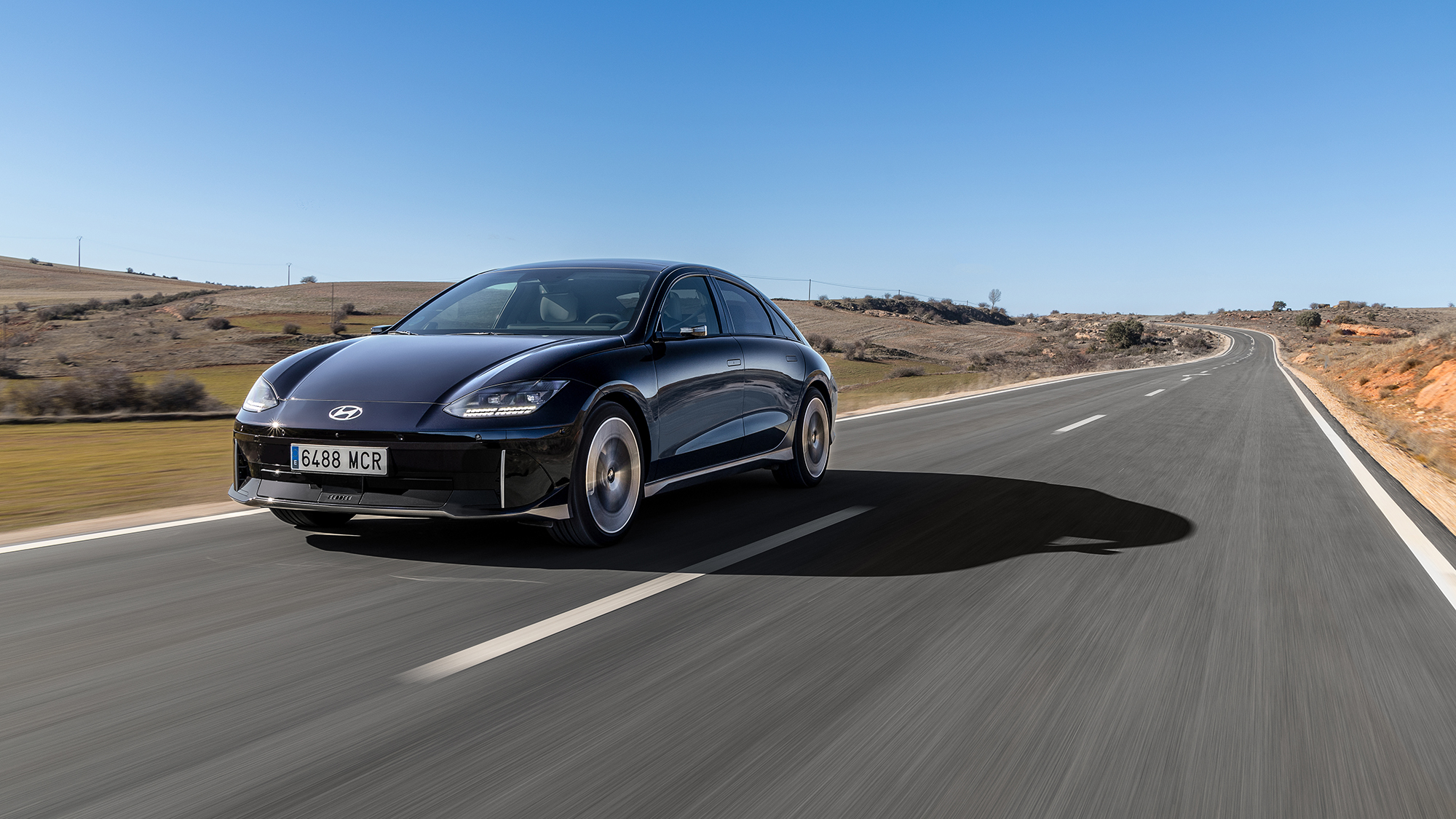

For decades, drivers in the United States have been able to think about the efficiency of their gas-powered vehicles with a simple criteria: miles per gallon. In fact, the Environmental Protection Agency started publishing the mpg metric for vehicles in the 1970s, and it makes intuitive sense. Theoretically, how far could your car travel on a single gallon of gasoline? The mpg figure is the answer.
But with electric vehicles—as well as plug-in hybrids—the situation gets a tad more complex. A pure EV does not burn gasoline. It gets the energy for its batteries from the grid, and is better for the environment.
Enter the MPGe metric, which stands for mile per gallon of gasoline-equivalent and “allows [for] a reasonable comparison between vehicles using different fuels,” the EPA says.
What is MPGe?
New EPA vehicle labels debuted in 2012. For electric vehicles, it includes the EV’s “fuel economy” listed in MPGe, as well as other metrics, like its range. You can check out the EPA’s EV label on the agency’s site. For plug-in hybrid-electric vehicles, that PHEV label shows both the car’s efficiency when running on just battery power (in MPGe), as well as its efficiency if it were just burning gasoline, in mpg. And of course, a traditional vehicle that burns only gasoline has a label with the regular mpg metric.
One commonality between the mpg metric and MPGe is that a larger number means better efficiency. “Miles per gallon is designed such that bigger numbers are better,” says David Gohlke, an energy and environmental analyst at Argonne National Laboratory in Illinois. “Higher miles per gallon means you go farther—you get more goodness out of the gallon of gasoline that you’re burning.”
[Related: Volvo’s new electric EX30 is cheaper than a Tesla Model 3]
The bigger-is-better metric might sound obvious, but that’s not always the case with other measurement metrics for vehicle efficiency. For example, the gasoline vehicle sticker also features a gallons-per-100-miles figure, and in that case, a lower number represents better fuel efficiency—ideally, you want to burn as few gallons as possible when driving 100 miles. Ditto, on an EV’s sticker you’ll find the kilowatt-hours-per-100-miles metric, with lower being more efficient. And a PHEV vehicle’s sticker contains both of those lower-is-better metrics.
But with the proliferation of EVs, the main metric to keep in mind is MPGe. “The EPA said, ‘Okay, well we’re going to need some way of describing these electric vehicles to the average person,” Gohlke says. “The EPA has come up with a conversion factor that translates from a kilowatt-hour of energy into the equivalent amount of energy in terms of a gallon of gasoline.”
How is MPGe calculated?
The kilowatt hours (kWh) equivalent from gas comes from “the total heat content that exists in a gallon of gasoline,” Gohlke says. “They say, ‘Okay, if we took this gallon of gasoline, and set it on fire, effectively, how much heat energy can we get out of that?’”
The answer to that question is 33.7 kWh. An EPA spokesperson notes via email that this figure is “a standard number for the energy content in gasoline.”
[Related: How to use less gas when driving with Google Maps]
So now the question becomes: How far can an EV travel on 33.7 kWh, which is equal to the energy in 1 gallon of gas? And that’s where the MPGe figure comes from.
For context when it comes to understanding kWh, the average American home used about 886 kWh of electricity each month in 2021, according to the US Energy Information Administration. Considering a 30-day month, that means daily electric use is about 30 kWh. If you have a 1,000-watt (1 kilowatt) microwave and use it for an hour, you’ve used 1 kWh of electricity. So MPGe is saying: Here’s how many miles this EV can travel on an amount of electricity that is just a bit more than the average US household consumes each day.
How can you find an EV’s MPGe?
To see how the EPA rates an EV with this MPGe metric, you can look up the vehicle at fueleconomy.gov. For example, one variant of the 2023 Hyundai Ioniq 6 gets 140 MPGe, when combining its city (153) and highway (127) ratings. That’s superb. A 2023 Tesla Model 3 gets 132 MPGe. What about the gargantuan GMC Hummer EV? It’s rated for 47 MPGe. The Hyundai and the Tesla are way more efficient than the Hummer.
Even if the MPGe measurement takes some getting used to, Paul Waatti, manager of industry analysis at AutoPacific, argues that it plays an important role. That’s because an EV’s range, which is also listed on the sticker, isn’t the full story. “That doesn’t necessarily tell you how efficient the vehicle actually is,” he says. “You might have a really high range number, like [with the electric] Hummer for example, but if you look at the MPGe figure for that, it shows that it’s very inefficient.”
Ultimately, the MPGe metric isn’t perfect, but it’s good to have. “From a consumer perspective, I think there’s still quite a bit of confusion on what it actually means,” Waatti says. Still, he argues that it’s an important metric for giving people a sense of the car’s efficiency.
Bottom line: A higher MPGe means the EV is more efficient, and right now, a number at or close to 140 is ideal.
